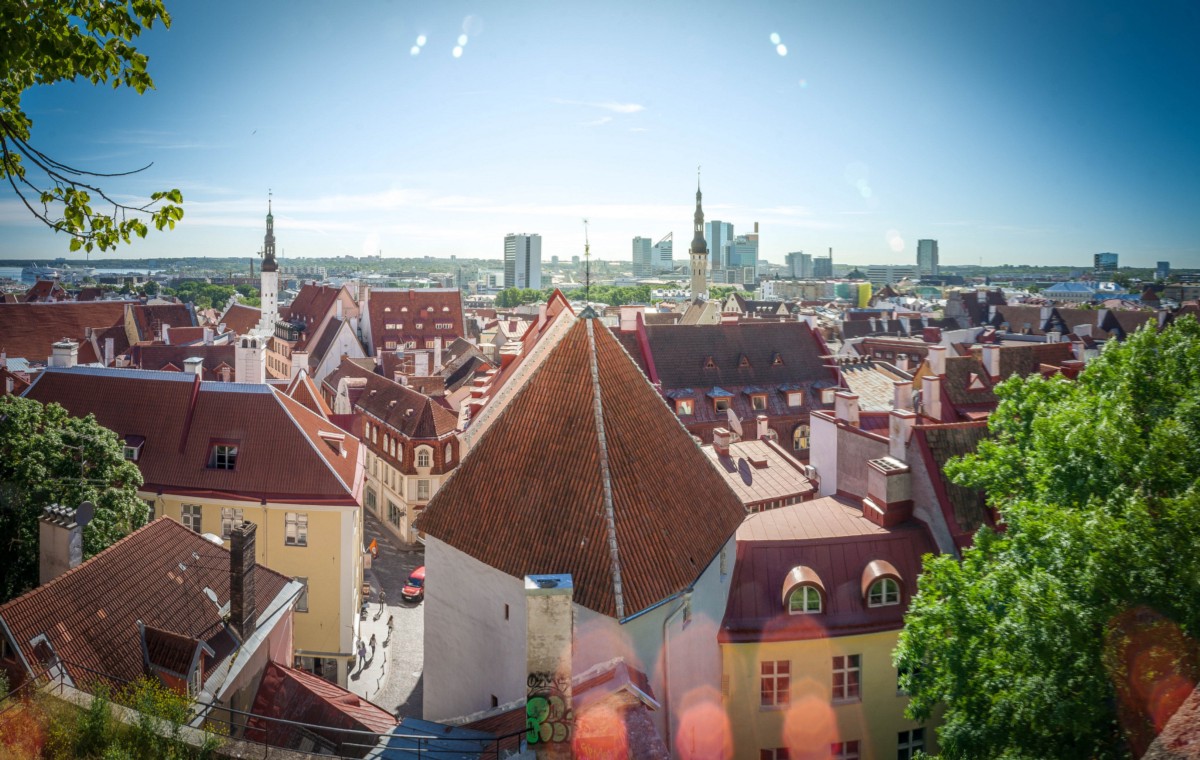

For a country that only became independent in 1991, Estonia has an enviable track record–technologically speaking. Here are a few milestones for your consideration.
With a population of only 1.32 million people, Estonia provides its citizens internet at one of the highest penetration rates in the world, with Wi-Fi hotspots covering almost all of its inhabited areas. By the late 1990s all Estonian schools were online, while cabinet meetings have been paperless since 2000 and all state services are also available on the web. Even more, Estonia was the first country to hold a legally binding general election with electronic-proxy voting in 2007.
Now, the Estonian government is running its own “startup”: the recently launched, attention-grabbing e-residency program that allows anyone to start a business in Estonia without being physically based in the country. “Even though we haven’t promoted it, we have got more than 5,500 new e-residents and more than 20,000 in a waiting list,” said Taavi Kotka, Estonia’s chief information officer in an interview with How We Get To Next.
The country is fertile ground for innovation and Estonian technology companies have had some considerable breakthroughs in recent years–with Skype (originally authored by Estonians Priit Kasesalu and Jaan Tallinn) being the most famous case. “The Estonians who created Skype’s technology gained a notable sum of capital for it–approximately one percent of our GDP at the time–and started investing in startups,” said Rivo Riistop, project manager at the Estonian Development Fund/Startup Estonia. (Skype sold to eBay in 2003 for $2.6 billion.) “But above all, Skype had an ultimate motivational effect on our entrepreneurs–this also caught the state’s attention.”
Its success provided the country with a certain kind of essential know-how. “There’s a great number of Skype alumni running around, who have the skills, knowledge, contacts, and drive to build something new–equally big and bold,” offered Annika LjaÅ¡, former CEO of the Latitude59 conference and current head of communications at Testlio. Estonian tech entrepreneurs are such a tight-knit community, she said, that they use the hashtag #EstonianMafia on Twitter.
A more recent example of startup dynamism is the popular peer-to-peer money transfer service TransferWise–it ranked #8 on CNBC’s 2015 Disruptor 50 list and counts Sir Richard Branson as one of its investors. And nowadays, new Estonian startups appear all the time. Counted among them is the on-demand, licensed-cabs app Taxify; the time-tracking tool Toggl; quality-assurance testers provider Testlio; the hourly jobs-staffing platform GoWorkaBit; Airbnb for museums Ticcet; global entrepreneur tool Teleport; and the sport-club effectiveness tool Sportlyzer.
So, what drives Estonia’s tech advances? According to Marlon Dumas, a professor of software engineering at the University of Tartu, the scene’s vigor is the result of certain enabling conditions that came together in the mid 90s after the fall of the Soviet Union, and the willingness and attitude of a generation of entrepreneurs in the last 15 years. “The local market is generally too small for businesses of substantial size to grow, so companies have to go international right from the start. In addition, there are no deep-pocketed local investors, so entrepreneurs have to look for funding abroad and this gives them an even stronger international push,” he explained.
Estonian independence especially played a key role. “After the collapse of the Soviet Union, the country made many difficult–but wise–decisions and abolished all the old [bureaucratic] systems, and built new ones from scratch. These were the early steps for enabling the most efficient and secure e-governance we enjoy in Estonia today,” LjaÅ¡ said.
Additional to the low bureaucracy levels, there’s a desire for government transparency and strong willingness by the Estonian state to embrace the internet as a primary means of communication between agencies, and with businesses and citizens. “The high level of adoption of e-services, both in the public and private sector, has been a key enabler for the emergence of a generation of internet entrepreneurs,” Dumas said.
Collaborative efforts by the state, educational institutions, and businesses have also contributed to the tech scene’s success. “Historically, cooperation between [the] private and public sector has been extremely important. For example, implementing the national ID card was a common effort,” explained Kotka. LjaÅ¡ agreed. Based on the e-residency experience, it has become “obvious that the direct cooperation between the public and private sector is a key element,” she said. Estonia’s healthy and vibrant local startup ecosystem offer entrepreneurs:
- Popular co-working spaces like the Tallinn-based Garage48 Hub and Tehnopol;
- Accelerators like Startup Wiseguys Business Tech, BuildIT, Prototron, and Accelerace Life;
- Business incubators like Incubator Tallinn and the Tartu Centre for Creative Industries;
- Startup support programs like Startup Estonia and Ajujaht;
- And a rich calendar of events like the Latitude59 conference, Seed Forum Tallinn, hackathons (GameJam), and regular offerings by the Estonian Business Angels Network.
Finally, a relatively high level of education has been an asset in the development of Estonian startups. In particular, a good level of mathematics in schools has played a vital part. “Youngsters arrive to university armed with analytical skills that allow them to grasp relatively quickly [the] fundamental skills to develop IT systems,” Dumas said.
The next few years will be a coming-of-age for the scene. “The startups that have emerged in the past 10 years will become mature companies and more sophisticated in their internal structure and processes,” he added.
Still, the current skills shortage in the IT field will be even more pressing and will be a major threat to the growth of the country’s local emerging commerce. To enable further growth of its startups, Estonia will have to attract more talent from abroad. “There is already some flow of international talent into Estonian tech companies, but this flow needs to further accelerate or else there will be no manpower to continue fueling the growth of existing startups, let alone creating new ones,” Dumas explained. Riistop agreed that one of the biggest challenges is around updating regulations concerning startup entrepreneurship, so as to further open Estonia to foreign talent. “We have mapped out our ecosystem’s weaknesses and strengths that the Startup Estonia program is planning to address,” he added.
LjaÅ¡ also highlighted the untapped potential of female entrepreneurs–most founders of Estonian startups are male–adding that “there should be a way for foreign investment coming to Estonian tech startups and also allow employees to stay in Estonia rather than going to their U.S. or U.K. subsidiaries.” Kotka observed that before the 2009 recession it was mostly private sector companies leading Estonian innovation. “After they cut their budgets, it is now more the government who leads innovation. But we are a small community, so we support each other in many ways,” he said.
The future development of the Estonian startup world will largely depend on its new generation of technology professionals. If fresh university graduates embrace the previous generation’s spirit of entrepreneurship, this will generate powerful dynamics. “Those who are gaining experience in the currently maturing generation of companies will go on to create new companies. These new companies will themselves contribute to forming a new generation of entrepreneurs, and so on. If things go this way, Estonia might go from being a ground of promising tech startups to becoming a self-sustaining global tech hub,” Dumas said.
Just as Estonian startups have been acting ambitiously in the last 15 years, we’ve got every reason to believe they will continue to do so.


How We Get To Next was a magazine that explored the future of science, technology, and culture from 2014 to 2019. This article is part of our Metropolis section, on the way cities influence new ideas–and how new ideas change city life. Click the logo to read more.
